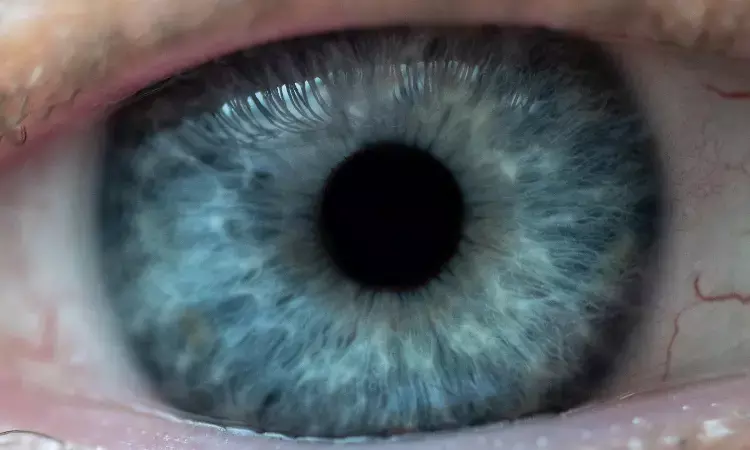- Home
- Medical news & Guidelines
- Anesthesiology
- Cardiology and CTVS
- Critical Care
- Dentistry
- Dermatology
- Diabetes and Endocrinology
- ENT
- Gastroenterology
- Medicine
- Nephrology
- Neurology
- Obstretics-Gynaecology
- Oncology
- Ophthalmology
- Orthopaedics
- Pediatrics-Neonatology
- Psychiatry
- Pulmonology
- Radiology
- Surgery
- Urology
- Laboratory Medicine
- Diet
- Nursing
- Paramedical
- Physiotherapy
- Health news
- Fact Check
- Bone Health Fact Check
- Brain Health Fact Check
- Cancer Related Fact Check
- Child Care Fact Check
- Dental and oral health fact check
- Diabetes and metabolic health fact check
- Diet and Nutrition Fact Check
- Eye and ENT Care Fact Check
- Fitness fact check
- Gut health fact check
- Heart health fact check
- Kidney health fact check
- Medical education fact check
- Men's health fact check
- Respiratory fact check
- Skin and hair care fact check
- Vaccine and Immunization fact check
- Women's health fact check
- AYUSH
- State News
- Andaman and Nicobar Islands
- Andhra Pradesh
- Arunachal Pradesh
- Assam
- Bihar
- Chandigarh
- Chattisgarh
- Dadra and Nagar Haveli
- Daman and Diu
- Delhi
- Goa
- Gujarat
- Haryana
- Himachal Pradesh
- Jammu & Kashmir
- Jharkhand
- Karnataka
- Kerala
- Ladakh
- Lakshadweep
- Madhya Pradesh
- Maharashtra
- Manipur
- Meghalaya
- Mizoram
- Nagaland
- Odisha
- Puducherry
- Punjab
- Rajasthan
- Sikkim
- Tamil Nadu
- Telangana
- Tripura
- Uttar Pradesh
- Uttrakhand
- West Bengal
- Medical Education
- Industry
Is static perimetry a viable test for negative dysphotopsia?

CAPTION
Researchers have developed a potential new treatment for the eye disease glaucoma that could replace daily eye drops and surgery with a twice-a-year injection to control the buildup of pressure in the eye.
CREDIT
Rob Felt, Georgia Tech
Netherlands: Whole threshold static perimetry with a Goldmann size III stimulation up to 60 degrees of eccentricity did not reveal any appreciable variations between measurements taken before and after intraocular lens (IOL) replacement or between patients with negative dysphotopsia and pseudophakic controls, a recent study has revealed.
The findings of the study, published in Optometry and Vision Science, indicates that this type of static perimetry cannot be used as a quantitative objective test for diagnosis or follow-up of patients with negative dysphotopsia.
There is a clinical requirement for a quantifiable test to reliably detect negative dysphotopsia, especially as the diagnosis is currently based on subjective descriptions provided by patients. This study rejects static perimetry as an appropriate evaluation tool in the search for a clinical test to objectify the shadow perceived in negative dysphotopsia. Furthermore, the purpose of this study was to test the use of static perimetry in the objective assessment and follow-up of negative dysphotopsia.
In 27 patients with negative dysphotopsia and 33 pseudophakic controls, peripheral 60-4 Full Threshold visual field tests were done. In addition, 11 patients with negative dysphotopsia underwent the test again following intraocular lens exchange. The entire peripheral visual field and the mean peripheral visual field from 50 to 60 degrees eccentricity were evaluated in patients and controls, as well as pre-and postoperatively in IOL exchange patients.
The key findings of this study were as follows:
1. There were no significant variations in peripheral vision fields from 30 to 60 degrees between patients with negative dysphotopsia and pseudophakic controls.
2. The median of the peripheral visual field from 50 to 60 degrees was 20.0 dB in the negative dysphotopsia group compared to 20.1 dB in the control group.
3. Although 82% of patients treated with IOL exchange reported subjective improvement in their negative dysphotopsia complaints after surgery, there were no significant alterations in their total peripheral visual field or mean peripheral visual field from 50 to 60 degrees.
In conclusion, the study brought out the fact that static perimetry of this sort cannot be utilized as a quantitative objective test for the diagnosis or follow-up of patients experiencing negative dysphotopsia.
Reference:
Rozendal, L. R. W., van Vught, L., Luyten, G. P. M., & Beenakker, J.-W. M. (2022). The Value of Static Perimetry in the Diagnosis and Follow-up of Negative Dysphotopsia. In Optometry and Vision Science: Vol. Publish Ahead of Print. Ovid Technologies (Wolters Kluwer Health). https://doi.org/10.1097/opx.0000000000001918
Neuroscience Masters graduate
Jacinthlyn Sylvia, a Neuroscience Master's graduate from Chennai has worked extensively in deciphering the neurobiology of cognition and motor control in aging. She also has spread-out exposure to Neurosurgery from her Bachelor’s. She is currently involved in active Neuro-Oncology research. She is an upcoming neuroscientist with a fiery passion for writing. Her news cover at Medical Dialogues feature recent discoveries and updates from the healthcare and biomedical research fields. She can be reached at editorial@medicaldialogues.in
Dr Kamal Kant Kohli-MBBS, DTCD- a chest specialist with more than 30 years of practice and a flair for writing clinical articles, Dr Kamal Kant Kohli joined Medical Dialogues as a Chief Editor of Medical News. Besides writing articles, as an editor, he proofreads and verifies all the medical content published on Medical Dialogues including those coming from journals, studies,medical conferences,guidelines etc. Email: drkohli@medicaldialogues.in. Contact no. 011-43720751


